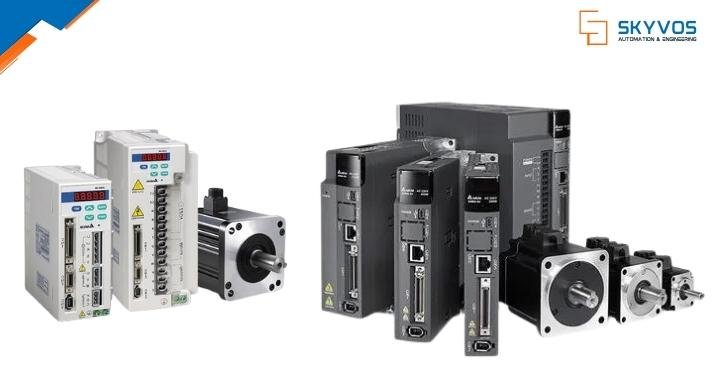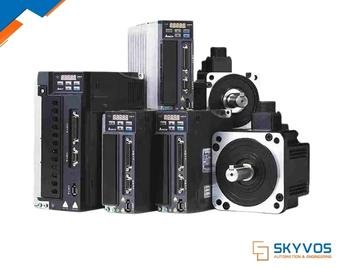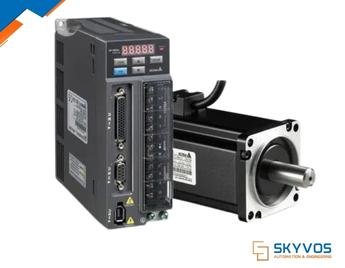Skyvos



Servo drives are responsible for motion control by precisely calculating the path or trajectory needed and sending command signals to the motor. Servo drives can control velocity, position, as well as torque; which is the main parameter it controls. The drive calculates the position or velocity that the motor must achieve and transmit this information to the appropriate set of amplifiers to be sent to the motor. At this point, what follows is a series of calculations concerning how much voltage and current must be produced in order to get from point A to point B.
Servo drivers are responsible for motion control by precisely calculating the path or trajectory needed and sending command signals to the motor. Servo drives can control velocity, position, as well as torque; which is the main parameter it controls. The servo drive consists of four major components: input power, an amplifier, a feedback sensor, and an output device. This type of motion control system has many advantages over other forms of motion control.
Servo drivers can also control velocity, which is the speed of the motor. The setpoint determines how fast or slows the motor should go. For example, if you are using your servo driver to move a screwdriver through a hole in some wood, you might want it to go at an average speed so that it doesn’t shake too much and break the wood.
Servo drives control the position of the servo motor by controlling velocity, which is the speed at which it moves. It does this by sending command signals to the motor in order to move the motor. The servo drive is responsible for motion control by precisely calculating and sending command signals to the motor.
The signal that is sent instructs how much torque needs to be applied on an axis. This will affect how fast and in what direction it moves.
MOTERs are often used to control the torque in systems. Torque is the main parameter it controls and usually has two axes, which can be used to produce linear or rotational motion. A typical application of a MOTER is to control the position of an electric motor using feedback from an encoder wheel. This feedback provides information on the position, velocity, and acceleration of a rotating shaft, which then allows for calculating the position, velocity, and torque of the shaft.
The three main types of motion control drives are servo, stepper, and brushless DC. Brushless DC is the most popular choice because it is efficient, precise, and can be used in many different applications. Skyvos are one of the most widely used servo drives because they offer high-performance and cost-effective solutions.